1. Barbagallo GM, Romano D, Certo F, Milone P, Albanese V. Zero-P : a new zero-profile cage-plate device for single and multilevel ACDF. A single institution series with four years maximum follow-up and review of the literature on zero-profile devices. Eur Spine J. 2013; 22(Suppl 6):S868–S878. PMID:
24061968.
2. Bartels RH, Donk RD, Feuth T. Subsidence of stand-alone cervical carbon fiber cages. Neurosurgery. 2006; 58:502–508. discussion 502-508PMID:
16528190.

3. Cho DY, Lee WY, Sheu PC. Treatment of multilevel cervical fusion with cages. Surg Neurol. 2004; 62:378–385. discussion 385-386PMID:
15518835.

4. Dufour T, Huppert J, Louis C, Beaurain J, Stecken J, Aubourg L, et al. Radiological analysis of 37 segments in cervical spine implanted with a peek stand-alone device, with at least one year follow-up. Br J Neurosurg. 2010; 24:633–640. PMID:
20632875.

5. Fraser JF, Härtl R. Anterior approaches to fusion of the cervical spine : a metaanalysis of fusion rates. J Neurosurg Spine. 2007; 6:298–303. PMID:
17436916.

6. Fujibayashi S, Neo M, Nakamura T. Stand-alone interbody cage versus anterior cervical plate for treatment of cervical disc herniation : sequential changes in cage subsidence. J Clin Neurosci. 2008; 15:1017–1022. PMID:
18653347.

7. Healy AT, Sundar SJ, Cardenas RJ, Mageswaran P, Benzel EC, Mroz TE, et al. Zero-profile hybrid fusion construct versus 2-level plate fixation to treat adjacent-level disease in the cervical spine. J Neurosurg Spine. 2014; 21:753–760. PMID:
25170655.

8. Hofstetter CP, Kesavabhotla K, Boockvar JA. Zero-profile Anchored Spacer Reduces Rate of Dysphagia Compared With ACDF With Anterior Plating. J Spinal Disord Tech. 2015; 28:E284–E290. PMID:
23429316.

9. Joo YH, Lee JW, Kwon KY, Rhee JJ, Lee HK. Comparison of fusion with cage alone and plate instrumentation in two-level cervical degenerative disease. J Korean Neurosurg Soc. 2010; 48:342–346. PMID:
21113362.

10. Katsuura A, Hukuda S, Saruhashi Y, Mori K. Kyphotic malalignment after anterior cervical fusion is one of the factors promoting the degenerative process in adjacent intervertebral levels. Eur Spine J. 2001; 10:320–324. PMID:
11563618.

11. Kim CH, Chung CK, Hahn S. Autologous iliac bone graft with anterior plating is advantageous over the stand-alone cage for segmental lordosis in single-level cervical disc disease. Neurosurgery. 2013; 72:257–265. discussion 266PMID:
23149973.

12. Korinth MC. Treatment of cervical degenerative disc disease - current status and trends. Zentralbl Neurochir. 2008; 69:113–124. PMID:
18666050.

13. Matz PG, Ryken TC, Groff MW, Vresilovic EJ, Anderson PA, Heary RF, et al. Techniques for anterior cervical decompression for radiculopathy. J Neurosurg Spine. 2009; 11:183–197. PMID:
19769498.

14. Miao J, Shen Y, Kuang Y, Yang L, Wang X, Chen Y, et al. Early follow-up outcomes of a new zero-profile implant used in anterior cervical discectomy and fusion. J Spinal Disord Tech. 2013; 26:E193–E197. PMID:
23168389.

15. Mummaneni PV, Kaiser MG, Matz PG, Anderson PA, Groff MW, Heary RF, et al. Cervical surgical techniques for the treatment of cervical spondylotic myelopathy. J Neurosurg Spine. 2009; 11:130–141. PMID:
19769492.

16. Njoku I Jr, Alimi M, Leng LZ, Shin BJ, James AR, Bhangoo S, et al. Anterior cervical discectomy and fusion with a zero-profile integrated plate and spacer device : a clinical and radiological study : clinical article. J Neurosurg Spine. 2014; 21:529–537. PMID:
25105338.

17. Qi M, Chen H, Liu Y, Zhang Y, Liang L, Yuan W. The use of a zero-profile device compared with an anterior plate and cage in the treatment of patients with symptomatic cervical spondylosis : a preliminary clinical investigation. Bone Joint J. 2013; 95-B:543–547. PMID:
23539708.
18. Salvati M, Cervoni L, Artico M, Raco A, Ciappetta P, Delfini R. Primary spinal epidural non-Hodgkin's lymphomas : a clinical study. Surg Neurol. 1996; 46:339–343. discussion 343-344PMID:
8876714.
19. Schmieder K, Wolzik-Grossmann M, Pechlivanis I, Engelhardt M, Scholz M, Harders A. Subsidence of the wing titanium cage after anterior cervical interbody fusion : 2-year follow-up study. J Neurosurg Spine. 2006; 4:447–453. PMID:
16776355.

20. Scholz M, Schnake KJ, Pingel A, Hoffmann R, Kandziora F. A new zero-profile implant for stand-alone anterior cervical interbody fusion. Clin Orthop Relat Res. 2011; 469:666–673. PMID:
20882376.

21. Shin JS, Oh SH, Cho PG. Surgical outcome of a zero-profile device comparing with stand-alone cage and anterior cervical plate with iliac bone graft in the anterior cervical discectomy and fusion. Korean J Spine. 2014; 11:169–177. PMID:
25346764.

22. Son DK, Son DW, Kim HS, Sung SK, Lee SW, Song GS. Comparative study of clinical and radiological outcomes of a zero-profile device concerning reduced postoperative dysphagia after single level anterior cervical discectomy and fusion. J Korean Neurosurg Soc. 2014; 56:103–107. PMID:
25328646.

23. Tampier C, Drake JD, Callaghan JP, McGill SM. Progressive disc herniation : an investigation of the mechanism using radiologic, histochemical, and microscopic dissection techniques on a porcine model. Spine (Phila Pa 1976). 2007; 32:2869–2874. PMID:
18246010.
24. van Jonbergen HP, Spruit M, Anderson PG, Pavlov PW. Anterior cervical interbody fusion with a titanium box cage : early radiological assessment of fusion and subsidence. Spine J. 2005; 5:645–649. discussion 649PMID:
16291105.

25. Wang Z, Jiang W, Li X, Wang H, Shi J, Chen J, et al. The application of zero-profile anchored spacer in anterior cervical discectomy and fusion. Eur Spine J. 2015; 24:148–154. PMID:
25337859.

26. Wang ZD, Zhu RF, Yang HL, Gan MF, Zhang SK, Shen MJ, et al. The application of a zero-profile implant in anterior cervical discectomy and fusion. J Clin Neurosci. 2014; 21:462–466. PMID:
24262773.

27. Zhou J, Xia Q, Dong J, Li X, Zhou X, Fang T, et al. Comparison of stand-alone polyetheretherketone cages and iliac crest autografts for the treatment of cervical degenerative disc diseases. Acta Neurochir (Wien). 2011; 153:115–122. PMID:
20924769.

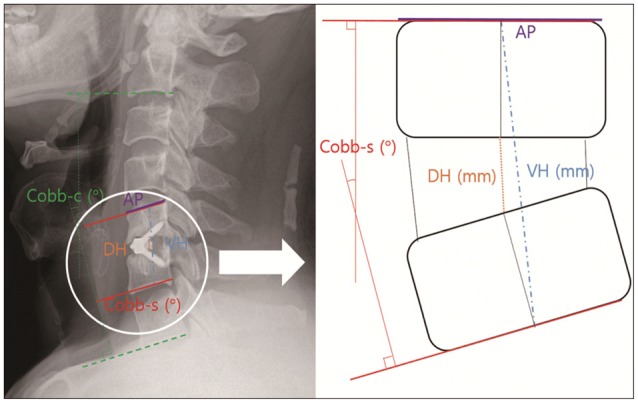
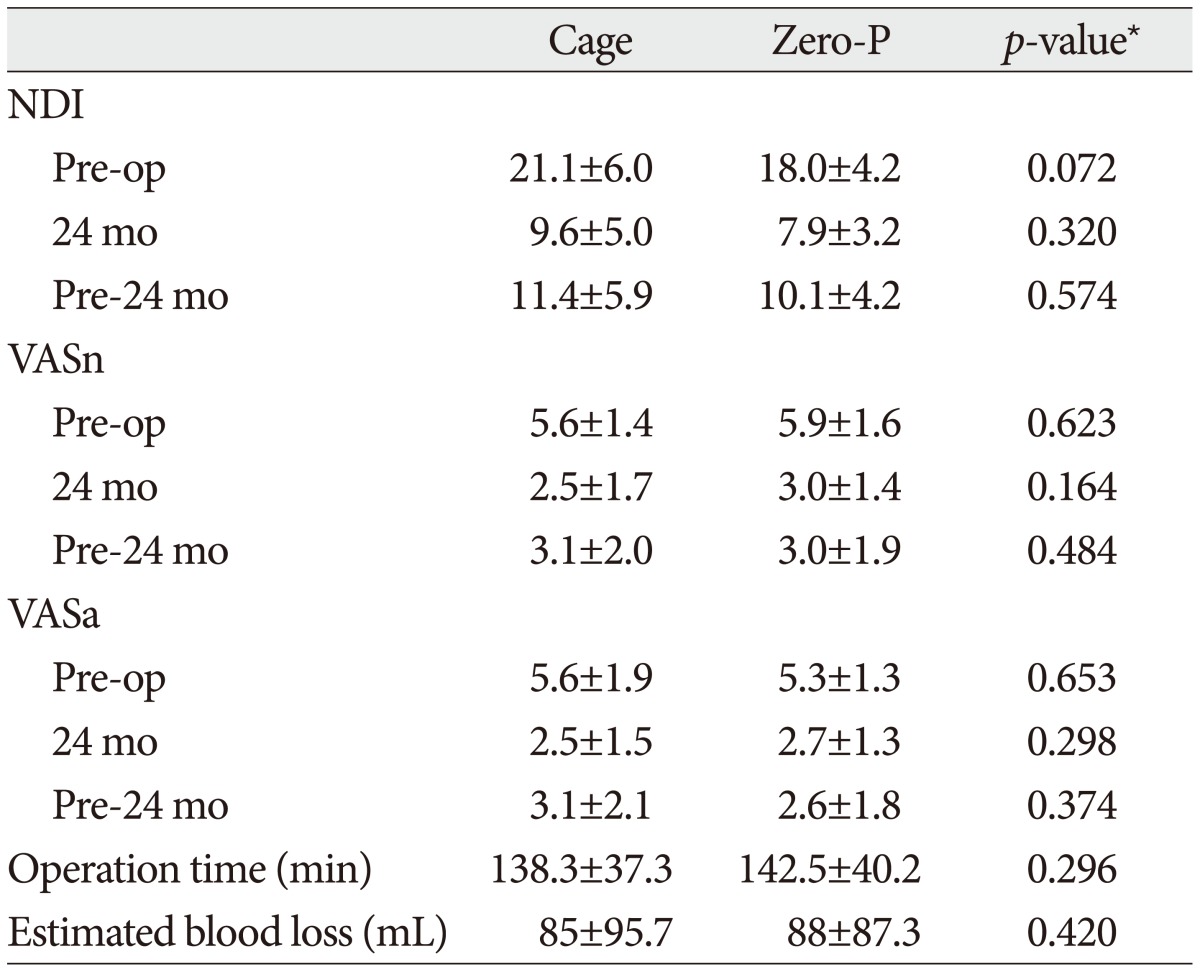
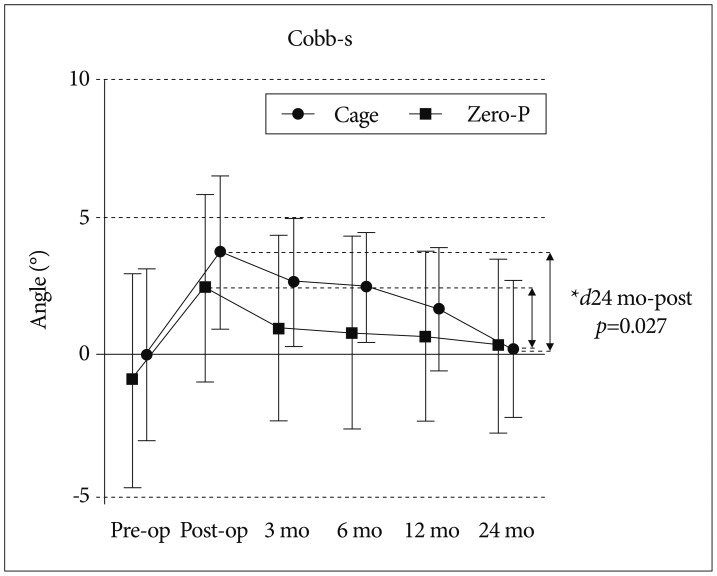
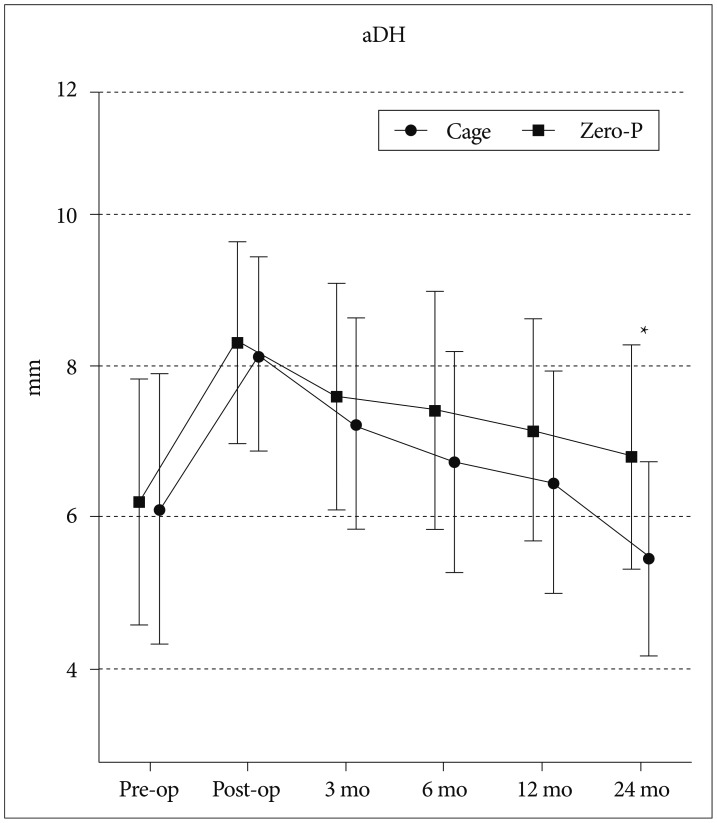




 PDF
PDF ePub
ePub Citation
Citation Print
Print


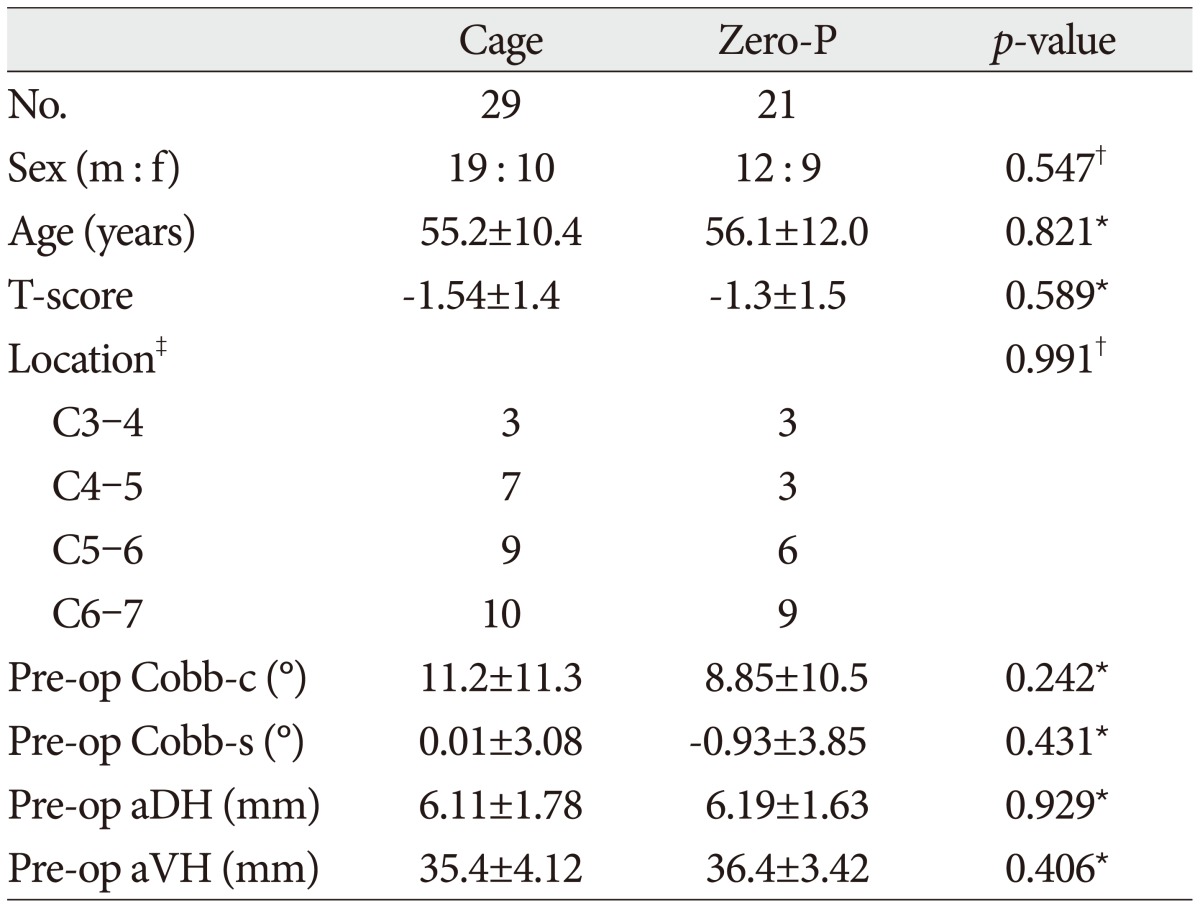
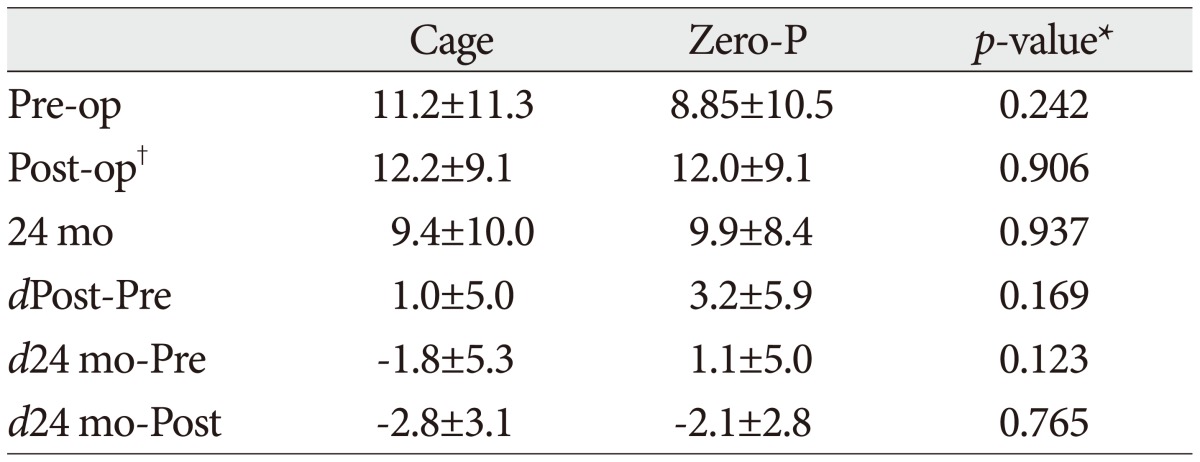


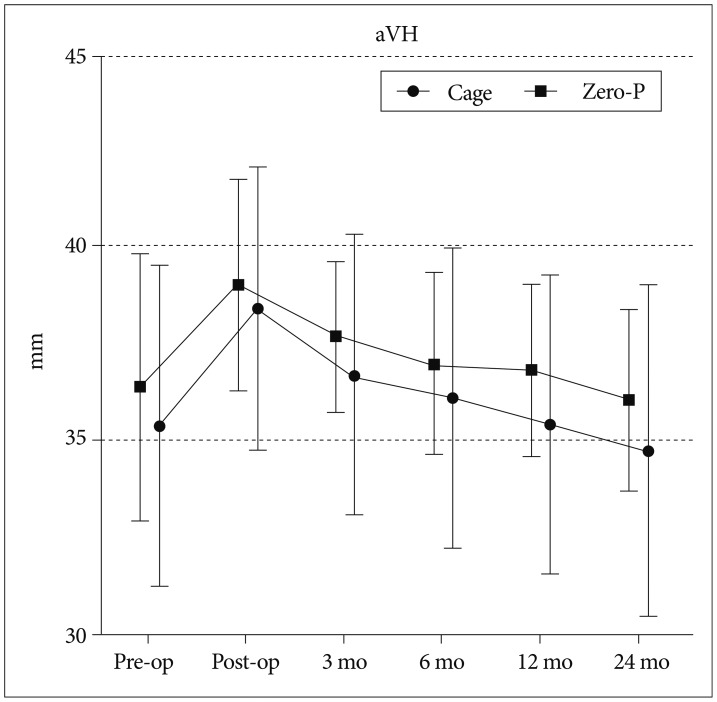
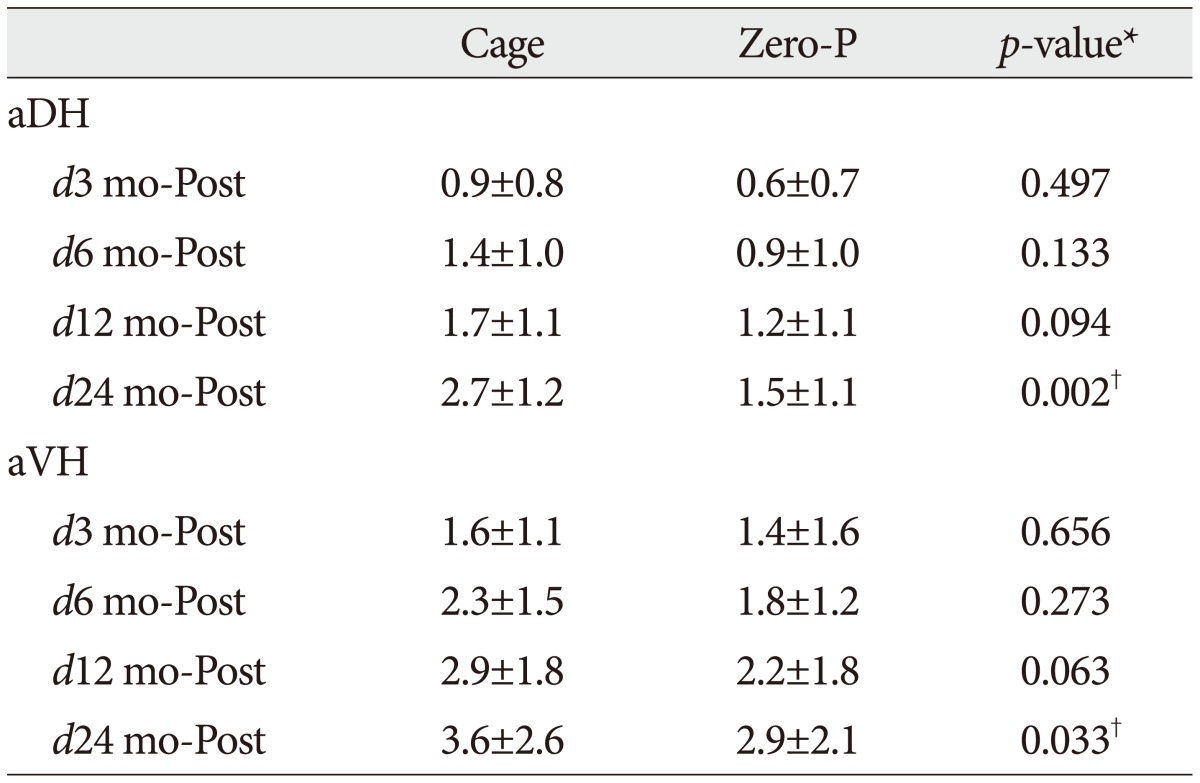
 XML Download
XML Download